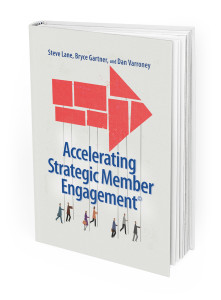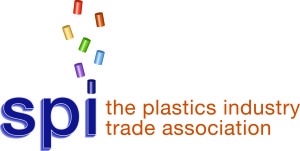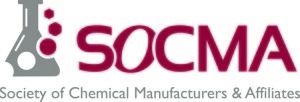
Members hire Customized Advocacy because they have no choice. They face turmoil driven by ever increasing new technologies, evolving consumer preferences, and political polarization. What’s more member companies are facing increasing demands for transparency from their board members, shareholders, and also from their consumers. Associations who customize their advocacy strategies will remain relevant. Those who don’t will falter.
Association Boards insist that their CEO’s are as nimble and focused on the marketplace as they are. Members hire Customized Advocacy because of the dynamic nature of the business environment and they need results in real time. Your organization’s ability to creatively and rapidly respond to new and emerging challenges through Customized Advocacy is what your members expect.
The magnitude of advocacy challenges spread far beyond the confines of the Washington, DC Beltway. In industries ranging from Food to Consumer Products, Associations are regularly challenged with legislative and regulatory activities at the Federal, State, and local government levels. Building timely and Customized Advocacy to respond rapidly is essential.
Associations will need ongoing connectivity with Board Leaders in strategic discussions about current and emerging Industry challenges. It also requires ongoing member interaction, and Industry focused research to develop and implement Customized Advocacy strategies.
NATIONAL MARINE MANUFACTURERS ASSOCIATION
NMMA represents boat, marine engine and accessory manufacturers, its members manufacture an estimated 80 percent of marine products used in North America.
Reflecting the Industry’s desire to continually maximize its Advocacy efforts, Thom Dammrich, President & CEO, NMMA continually seeks opportunities to utilize Customized Advocacy to maximize business impact for the Marine Industry. Part of NMMA’s Customized Advocacy focus is building, leading, and participating in coalitions to advocate and promote the Industry.
 Nowadays the most impactful resource that an Industry has is the data it utilizes to make its case with Legislators and Regulators. Where Industry numbers are presented in these conversations, it could have more impact if numbers were reflected in data released by the Federal Government. Recognizing this, the Outdoor Recreation Roundtable, a coalition of twenty one outdoor recreation trade associations that includes the National Marine Manufacturers Association, the Outdoor Industry Association, and the Motorcycle Industry Council galvanized their efforts. Their focus was to have Outdoor Recreation recognized by the Federal Bureau of Economic Analysis:
Nowadays the most impactful resource that an Industry has is the data it utilizes to make its case with Legislators and Regulators. Where Industry numbers are presented in these conversations, it could have more impact if numbers were reflected in data released by the Federal Government. Recognizing this, the Outdoor Recreation Roundtable, a coalition of twenty one outdoor recreation trade associations that includes the National Marine Manufacturers Association, the Outdoor Industry Association, and the Motorcycle Industry Council galvanized their efforts. Their focus was to have Outdoor Recreation recognized by the Federal Bureau of Economic Analysis:
- Legislation was introduced and later enacted into law by President Obama in 2016.
- The new law directed the Bureau of Economic Analysis to develop a measurement of the outdoor economy in the same way that it tabulates other Industries and the overall economy.
- The Outdoor Industry Association updates its estimate of the Outdoor Recreation Economy in 2017.On February 14, 2018, the U.S. Department of Commerce’s Bureau of Economic Analysis (BEA) released a report showing that the outdoor recreation economy accounted for 2.0 percent or $373.7 billion of current-dollar GDP in 2016.
 Thom Dammrich celebrated the Industry’s Customized Advocacy success, “As an industry, we are proud to generate millions of American jobs and be a driving economic force from coast to coast, and we are grateful that the BEA and the Department of Commerce have decided to recognize that.”
Thom Dammrich celebrated the Industry’s Customized Advocacy success, “As an industry, we are proud to generate millions of American jobs and be a driving economic force from coast to coast, and we are grateful that the BEA and the Department of Commerce have decided to recognize that.”
NMMA regularly conducts Industry research and is in the midst of a Strategic Industry Business Planning Process.
HOUSEHOLD & COMMERCIAL PRODUCTS ASSOCIATION
HCPA is a Trade Association that advocates for companies that make and sell $180 billion annually of products used for cleaning, protecting, maintaining, and disinfecting in homes and commercial environments. Association members employ 200,000 people in the U.S.
Since joining HCPA as its new President & CEO in January 2017, Steve Caldeira and his team continually communicate with their Board and members to stay connected to evolving member challenges and opportunities.
Their Customized Advocacy strategy incorporates Board direction for:
- Collaboration with Supply Chain-related Trade Associations to maximize the Industry’s business impact.
- Communication and responsiveness on increasing consumer transparency concerns with NGOs (non-governmental organizations) and retailers who sell products.
- Scientific Research to highlight and validate the Industry’s critical role in developing environmentally safe products for consumers.
 The HCPA Customized Advocacy model delivered an important win through the passage and enactment of California’s Cleaning Product Right to Know Act in 2017. Environmental and public health groups believe that consumers and workers need to know a lot more about the cleaning products in their kitchens, bathrooms and work spaces. Product manufacturers want labels that educate their customers without alarming them or providing details so minute that they obscure serious concerns about human health.
The HCPA Customized Advocacy model delivered an important win through the passage and enactment of California’s Cleaning Product Right to Know Act in 2017. Environmental and public health groups believe that consumers and workers need to know a lot more about the cleaning products in their kitchens, bathrooms and work spaces. Product manufacturers want labels that educate their customers without alarming them or providing details so minute that they obscure serious concerns about human health.
The balanced solution that California lawmakers devised allows consumers and workers to see the facts they really need to know, because the labeling focuses on important ingredients, such as those that have been linked to various health concerns. The California law, was backed by more than 100 environmental and public health groups, including the Natural Resources Defense Council, Breast Cancer Prevention Partners, Women’s Voices for the Earth and the Environmental Working Group, as well as cleaning product giants such as ECOLAB, Procter & Gamble, Reckitt Benckiser, and SC Johnson. Both sides compromised after numerous meetings; a clear sign of a successful negotiation.
 Reflecting upon the Industry’s Customized Advocacy success, Steve Caldeira notes that “our industry will always be open to collaboration with a diverse group of stakeholders to successfully address our member’s interests.”
Reflecting upon the Industry’s Customized Advocacy success, Steve Caldeira notes that “our industry will always be open to collaboration with a diverse group of stakeholders to successfully address our member’s interests.”
How Associations Build Their Own Customized Advocacy Strategies
Associations can develop Customized Advocacy through ongoing interaction with boards and members. What drives successful Customized Advocacy is a steady flow of communication and collaboration to help define the challenges and the business impact that the Industry is seeking:
- Stay connected through a systematic approach to annual data collection through interviews and Industry (or Profession focused) survey research.
- Utilize research to focus Board meeting discussions on Industry challenges and then deliver Customized Advocacy that adds business impact to the members.
- Learn about member challenges firsthand. Whenever possible meet with members face to face.
- Continually measure and assess business impact.
Each step will maximize the alignment between the Association and your members. Moreover, your organization will continually add business impact to members because of the Customized Advocacy strategies that you develop.
Members Hire Customized Advocacy
Despite strong growth forecasts member company CEO’s have a less robust view after 2018. From now on member companies will seek out those Associations that deliver business impact. Customized Advocacy helps position Associations as the valuable ally that members need to navigate the complex business landscape.
Organizations such as NMMA and HCPA are perceived as extensions of business and marketing strategies by their members and deservedly so. They demonstrate how important it is for today’s Association to help navigate and advance Industries through an ongoing era of disruption and turmoil. In doing so these organizations will increase their business impact and their relevance because of their Customized Advocacy focus.
Yes, it’s important to remember in 2018 that Members Hire Associations and Members Fire Associations. It’s just as important to recognize that from now on Members will especially hire Associations that deliver Customized Advocacy.
To learn more about how your Association can implement Customized Advocacy click here.














 Members care about
Members care about 




